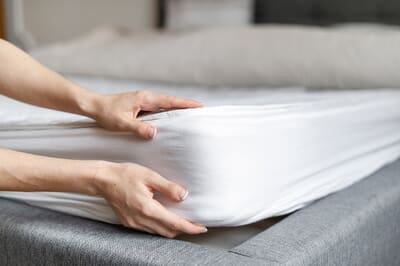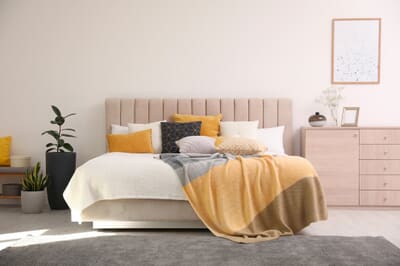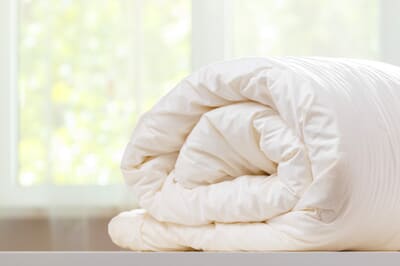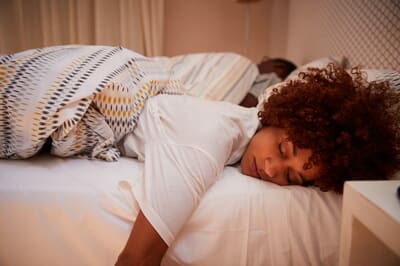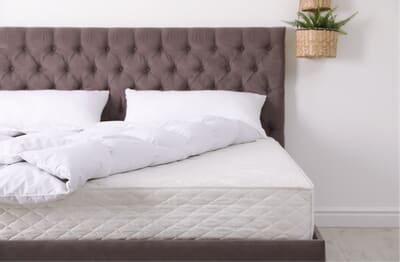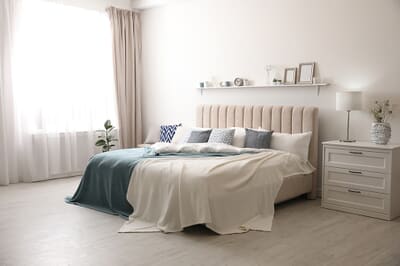There are plenty of mattress styles available. So many that it can get confusing when trying to pick the best one for you. There are mattress styles and fillings to suit every sleeper and their needs. And, many of us could be sleeping on the wrong style for our sleep needs. In this guide, we'll explain the mattress materials and help you choose your perfect mattress style.
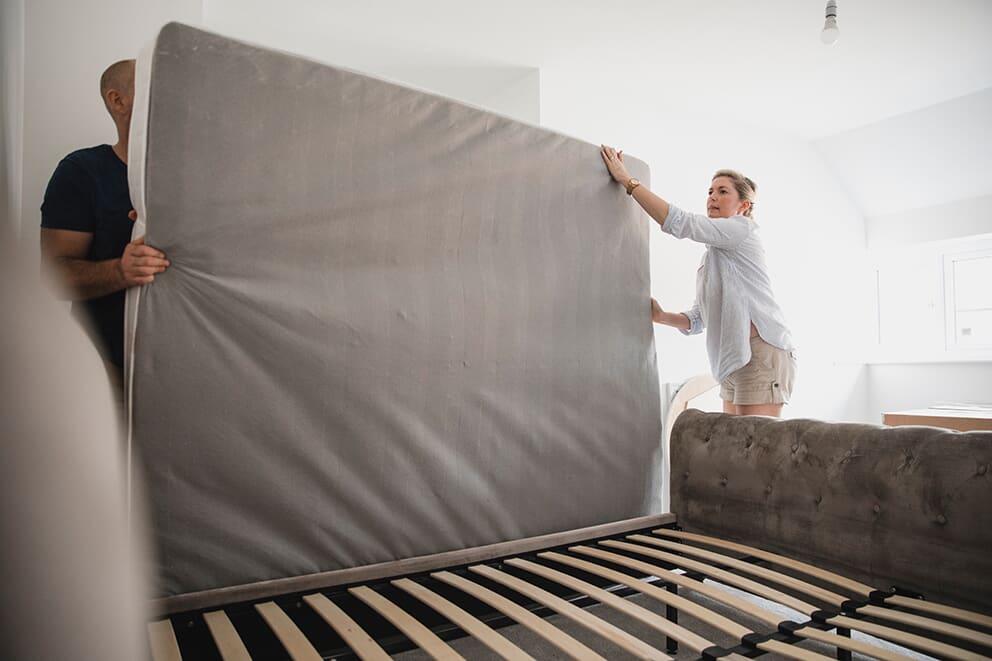
What are the different types of mattress materials?
Mattresses come in all shapes, sizes and styles. The material plays a huge role in how comfortable the mattress will
Mattresses come in all shapes, sizes and styles. However, it’s the material they’re made from that makes a big difference in how they feel. Choosing the right type of material can mean the difference between a good night’s sleep and a great one.
Ranging from foam and springs right through to water beds and snuggly pillow tops, the different types of mattresses mean there’s one for every type of sleeper.
Foam mattresses
A foam mattress is perfect for people that like a soft, yet supportive surface to sleep on. It has a unique cushioned feeling that is particularly good for those who sleep on their side.
The foam cradles and cushions the joints while still supporting the spine. This keeps the spine in a neutral position and prevents pressure points from developing in sensitive areas such as the neck and shoulders, lower back, and hips.
Foam can also be beneficial for people suffering from joint pain. The soft surface ensures that no matter what sleeping position you end up in, there won't be too much pressure on any one spot. This reduces tension and aches in the joints.
Foam mattress styles:
Memory foam – Designed by NASA, memory foam is a dense foam that moulds to your shape to cushion and support you. A great choice if you’re a side sleeper.
Latex foam – Made from natural latex, latex is a natural choice and a greener option than memory foam. It’s a soft foam that’s incredibly comfortable for back and side sleepers.
Gel foam – Gel foam layers incorporate little gel ‘beads’ that acts to cool the foam. This is a great choice if you suffer from night sweats or prefer a cooler sleeping environment.
Reflex foam – Similar to memory foam, reflex foam is a bit firmer and denser. It provides a medium-firm feel. It’s also particularly good for children’s mattresses or for those who like foam but want a little more support. Ideal for front sleepers.
Spring mattresses
Spring mattresses are the most traditional design. They use high-tensile springs in either individual pockets or an open-coil matrix. It’s a method of mattress manufacturing that’s been used for centuries and is still popular today.
Spring mattresses range from soft to orthopaedic. This means that no matter what you prefer, you’re bound to find your perfect mattress tension. Spring mattresses are ideal for all kinds of sleepers and are particularly popular with people who prefer to sleep on their back.
They range in price from budget to luxury depending on the quality and spring count. The materials used in their construction will also have an influence over the price. Pocket sprung mattresses are usually more expensive than open coil styles. This is because they're more durable and offer more comfort benefits. With pocket springs, there’s no transfer of movement, making them popular for couples sharing a bed.
Spring mattress styles:
Pocket sprung – Individual springs sit in their own cloth pockets. This allows them to move independently, but still in sync with their neighbouring springs. Minimal movement transference.
Open coil – The oldest form of mattress design. A matrix of high-tensile steel springs is joined together to form a core surrounded by layers of fibres. Responsive and comfortable.
Miracoil – Silentnight’s patented design, these springs are structured vertically rather than horizontally. Incredibly responsive, they provide outstanding support and cushioning.
Alternative mattress fillings
Water mattresses are still available today, but they’ve been overtaken by more advanced alternatives like gel foam. These are safer, easier to maintain, and more commonly available.
Hybrid styles are usually a mix of springs and foam. Because you have a combination of the two most popular types of fillings, they give you the best of both worlds. They have the support and bouncy feel of a spring design with the soft, cushioned feeling of memory foam.
Pillow-top styles tend to be a mix of springs with a soft pillow comfort layer. This provides all the support you need, with a softer top to sink into at the end of the day. They’re a great choice for side sleepers that need an extra bit of padding for their joints.
Which mattress materials last the longest?
According to the National Bed Federation, the average mattress will last around seven years before it needs replacing. However, some styles and materials last longer than others. If durability is what you're looking for in a mattress then there are plenty of long-wearing styles available.
Latex foam and pocket sprung models tend to be the hardiest of the bunch. With higher quality styles lasting between eight to ten years. A whole three years longer on average. Although, the life span of a mattress will depend on the usage, quality, and care taken to protect it. Here are a few care tips to follow when trying to extend the life of your mattress:
- Use a mattress protector: mattresses can be expensive and the last thing you want to do is spill your morning coffee all over it and damage the inner fillings. Using a waterproof mattress protector from the start will protect the materials from any spills or accidents.
- Regular cleaning: don't worry, cleaning doesn't mean you'll need to scrub it once a week. To keep your mattress clean, aim to vacuum or sweep it once every three months. Generally, spring styles benefit from being vacuumed every so often. However, foam styles are better off being swept. Vacuums can damage and even tear foam mattresses so be sure to check the instructions before doing so.
- Flip or turn: to ensure even wear all over the mattress, try flipping or turning it a few times a year. This prevents putting too much pressure on one section which can cause sagging. Make sure to check what is suitable for your mattress. Some styles need flipping, some rotating and some are designed to be left alone.
What mattresses are made of natural materials?
Natural materials are used in many mattress styles. However, natural mattresses are made up entirely from natural fibres. These materials include wool, latex, cotton, mohair, bamboo and hemp. All of these materials have their own unique comfort benefits.
Latex foam is a very popular style of natural mattress. And with the same comfortable feel like memory foam and little eco-damage, it's no wonder. Materials like Egyptian cotton and silk are popular among premium mattress styles. If a luxury feel is what you're looking for, these materials could be perfect for you.
Which mattress material is the best for sleeping?
This comes down to one thing – personal choice. While some love the cushioned softness of memory foam, others will prefer the more reactive feel of a pocket spring mattress.
You need to consider a range of factors when choosing your ideal mattress, such as your size and weight, how you sleep, and what firmness rating you prefer. Do plenty of research before you buy.
If you like the feel of foam but need something firmer then Reflex foam may be better than latex, which is softer. If you’re sleeping with a partner and tend to wriggle, pocketed springs will ensure that any movement isn’t transferred through the mattress. This will prevent your night-time wriggling from waking up your partner.
Natural materials like latex or pure wool fibres are anti-microbial and anti-bacterial. So, they’re ideal for people who suffer from allergies or respiratory problems. And if you suffer from night sweats or hot flushes, the open structure of a spring mattress will be much cooler than a foam option.
How to choose the perfect mattress material:
When choosing your perfect mattress, you should consider a few key things. Your body weight, the position you like to sleep and your comfort preferences. Some people love the bouncy, supportive feel that pocket springs provide. While others enjoy a sinking, soft feeling from a material like memory foam. Bodyweight plays a huge factor when deciding on the mattress firmness. Usually, the more you weigh, the firmer your mattress should be. As a rule of thumb, those under nine stone are best suited to a soft or soft-medium tension. Medium or medium-firm tension is considered the universal mattress. Being comfortable for most body weights. Those sixteen stone and over usually feel best supported with a firm mattress. For more information on choosing your perfect mattress, check out our mattress buying guide.

